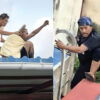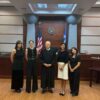CANOES are at the heart of 500 Sails’ organization. The nonprofit was established in 2014 and has since sought to make canoes a part of the everyday lives of the people of the Marianas.
According to its organizational strategic plan, 500 Sails’ name was inspired by the arrival of the Spanish galleon San Pedro in Guam in 1565. The vessel was met at sea and escorted to the coast by hundreds of Chamorro sailing canoes. An observer on the San Pedro that day wrote that he counted 400-500 canoes around the ship.
500 Sails creates canoes on Saipan at its boatyard in Lower Base based on the “Anson Drawing,” which is a document that records the dimensions of one of the last known Chamorro sailing canoes, captured off the coast of Tinian in 1742 by the crew of British Commodore George Anson.
500 Sails has the following vessels in its fleet:
1. Che’lu
Che’lu is a true sakman. These days, the word sakman has come to encompass every Chamorro sailing canoe, but in the historic record it refers to oceangoing canoes that are between 40 and 50 feet long. Che’lu is 47 feet long. Her name means “sibling” in Chamorro. Her story begins in 2006 when Pete Perez, of Sakman Chamorro, Inc. on Saipan, and Mario Reyes Borja, of Che’lu, Inc. in San Diego, decided to combine their efforts to build a sakman based on the 1742 “Anson Drawing” of a Chamorro canoe. Sakman Chamorro contributed research and funding to start the build that was led by Mario Borja, an expert carpenter and engineer. The canoe was built in San Diego, California in 2011 from a redwood log, with plenty of “happy labor” from the Chamorro community there. Che’lu has participated in the Festival of the Pacific Arts and Culture in Guam in 2016 and in Hawaii in 2024. Having called San Diego, Guam, and now Saipan home, Che’lu has huge cultural and historic significance to Chamorros throughout the Marianas and the Diaspora.
2. Neni
Neni is 500 Sails’ first locally built canoe and the first Chamorro sailing canoe on Saipan for hundreds of years. She is 26 feet long with a main hull and outrigger hull made of fiberglass lashed to bamboo spars. In Micronesia, canoes are traditionally made of lemmai and other wood, but 500 Sails wanted to build many canoes fast and economically, so the decision was made to use modern materials. Neni was mostly fabricated in New Zealand by a 500 Sails crew from Saipan and Guam under the direction of yacht builder Derek Kelsall. After the canoe was completed on Saipan, Neni was carried into the water by island youth where she touched water for the first time, alongside the Carolinian canoe Makalili Teenager. Neni was sailed for the first time by the crew that built her. The word “neni” means “baby” in Chamorro. She’s 500 Sails’ “first-born child.”
3. Richard Seman
Richard Seman is named after the late former lawmaker and Secretary of the Department of Lands and Natural Resources. Mr. Seman was an early supporter of 500 Sails and helped the organization secure the warehouse in Lower Base that houses the 500 Sails boatyard. He also secured the Guma Sakman, 500 Sails’ canoe house, on the beach at Civic Center. When Mr. Seman passed away suddenly and unexpectedly, the organization named its second locally built canoe in his honor. Richard Seman has the distinction of being the first 500 Sails canoe fabricated entirely on Saipan. The 500 Sails Boatyard that Mr. Seman helped secure has been the birthplace of all subsequent canoes in the fleet.
4. Anaguan
500 Sails’ third 26-foot canoe, Anaguan, was commissioned by the Indigenous Affairs Office and named to honor the ancient village of Anaguan that once stood near the shore in Garapan. The remains of 700 Chamorro individuals were unearthed at the Anaguan village site during the construction of Imperial Pacific International’s casino. When the remains of the villagers were reinterred, the community held an hours-long burial ceremony, after which Anaguan was among four Chamorro canoes that symbolically sailed from the shore with the spirts of the deceased.
5. Aunty Oba
The 26-foot-long canoe Aunty Oba is named after the late Jacoba Seman, who lived near the shoreline in Susupe, just north of the Guma Sakman. Ms. Seman was also known as “Oba.” When she passed, her family requested the new canoe be named in her honor. This beautiful canoe features a red stripe painted beneath its gunwale and black and red ocean motifs that are based on pottery designs from the pre-Latte Era of Marianas history. The motifs call to mind ocean waves. Her outrigger is also painted black, white, and red—the colors of Chamorro canoes, according to historical records. On both mata of Aunty Oba (the front part of the canoe) is an illustration of a Chamorro woman—from the oldest known drawn portrait of a Chamorro. Sailors on Aunty Oba have remarked that the canoe picks up speed whenever they pass Aunty Oba’s house!
6. Dee Dee
500 Sails transitioned into a new phase of building with Dee Dee, their first 15-foot canoe—one that can easily be sailed by one person. Chamorros were noted in the historic record as having specific models of canoes of various lengths. Dee Dee’s design is based on the description of a small Chamorro sailing canoe called a “duding.” The canoe is named in memory of the late Deloris Perez, the mother of the boat’s designer and builder, Pete Perez.
7. Animuyi
Animuyi is the second “duding” built by 500 Sails. The canoe was commissioned by James and Penelope Hofschneider, who share the canoe for use in 500 Sails’ community programs. Like Aunty Oba, Animuyi’s hull is beautifully painted. Animuyi also has some design changes that grew from experience in sailing Dee Dee. The canoe was displayed for a time in the lobby of the Bank of Saipan as part of an exhibit of Chamorro and Carolinian maritime traditions, followed by a public ceremony that ended with members of the canoe sailing community carrying Animuyi to the lagoon for her launch.
8. Den Yo Povi
Den YoPovi is 500 Sails’ newest “duding.” It is owned by long-time 500 Sails volunteer and lifelong peskadot and talayeru, Jeremiah Benavente. The canoe reflects his Chamorro and Native American heritage. Like her predecessors, Den Yo Povi is a Chamorro-designed vessel; however, Benavente personally painted the canoe with designs and motifs that reflect his mother’s Hopi heritage. In his mother’s language, Den Yo Povi means “blue spruce blossom.”
9. Mikaela
Mikaela is 500 Sail’s first Carolinian canoe. Its builder is master navigator Mario Benito, of Poluwat. He and his family members, alongside 500 Sails staff, crafted Mikaela. At 22 feet long, Mikaela follows the design lines of the voyaging canoe Mikael that was built by Mario’s grandfather. Mikaela’s hull and outrigger are built of modern fiberglass materials, while its spars, mast, and boom are made of wood. Mikaela was launched just in time to join the 13th Festival of the Pacific Arts and Culture in Hawaii.
10. Ladahao
Ladahao’s journey into the 500 Sails fleet is unique. This 41-foot canoe is made of aviation plywood and fiberglass and was fabricated in 1968 in Chicago, Illinois. At that time, the boat’s name was Roberta L. It was fabricated by steelworkers who wanted to win a 330-mile yacht race in the Great Lakes. Upon researching fast boat designs, they came across the Anson Drawing, built the canoe, and entered the canoe in the race. With a top speed of over 30 miles per hour, Roberta L beat the second-place boat by five hours. Nearly 50 years later, the canoe showed up for sale on Craigslist. The owner agreed to donate the canoe to 500 Sails so that it could be restored and sailed in Chamorro waters. After the restoration, the canoe got a second, Chamorro name, Ladahao, after a Chamorro Magalahi, or chief, on Saipan who was noted for his valor in the Chamorro-Spanish Wars.
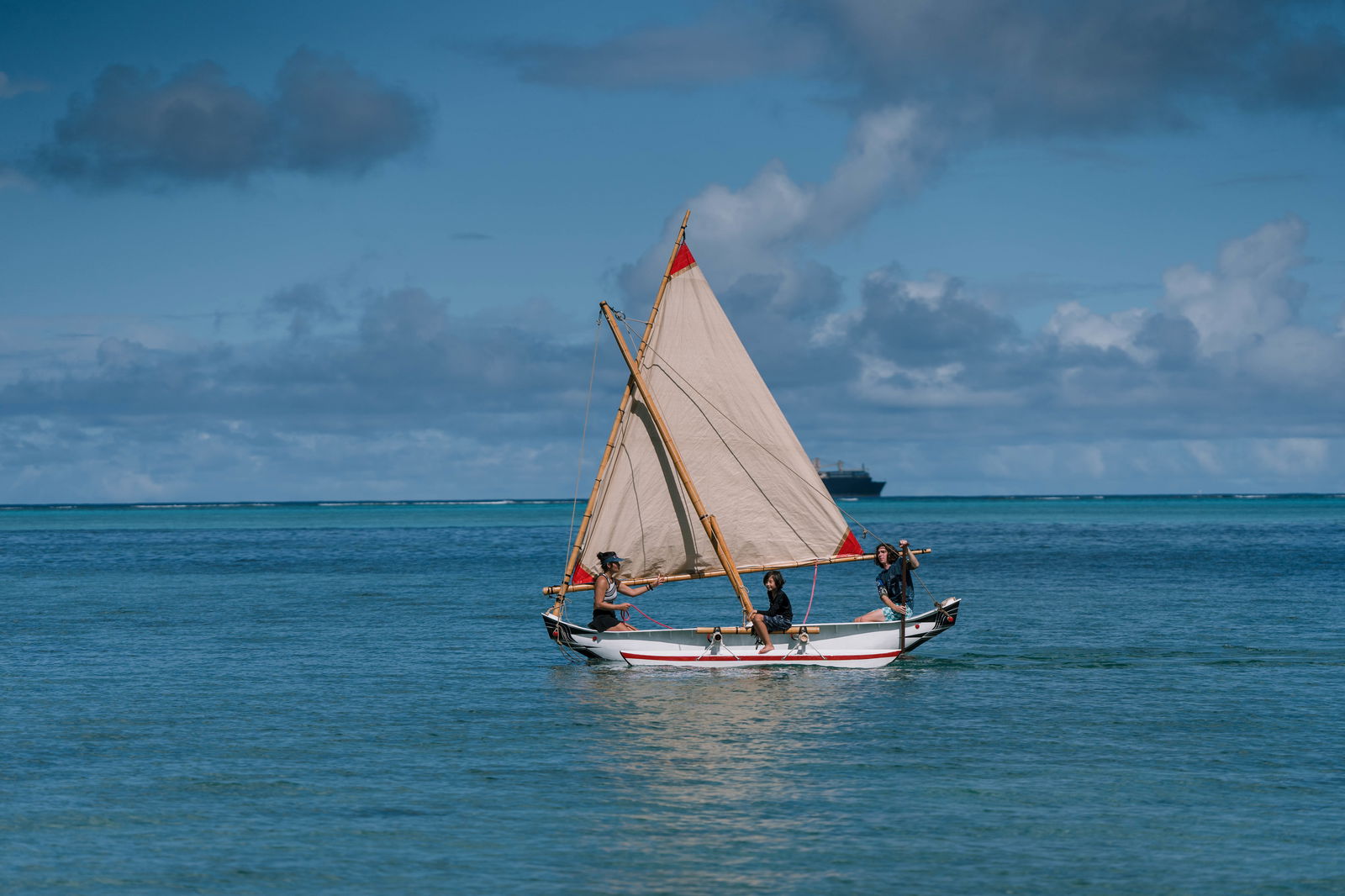
Animuyi sails through the Saipan Lagoon on her official launch day.
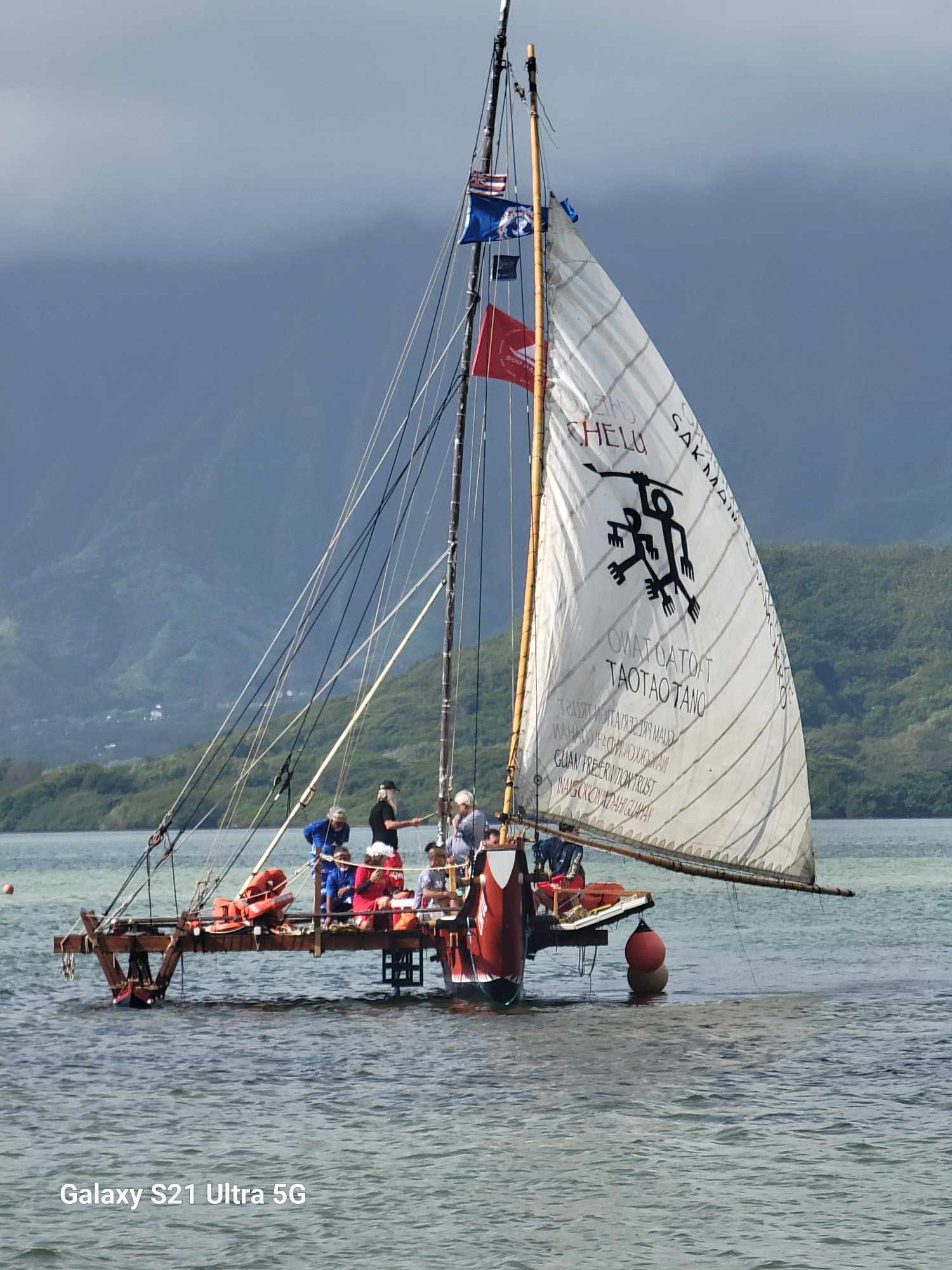
Che’lu sails in Hawaii as part of the opening canoe ceremony at the 13th Festival of the Pacific Arts and Culture.
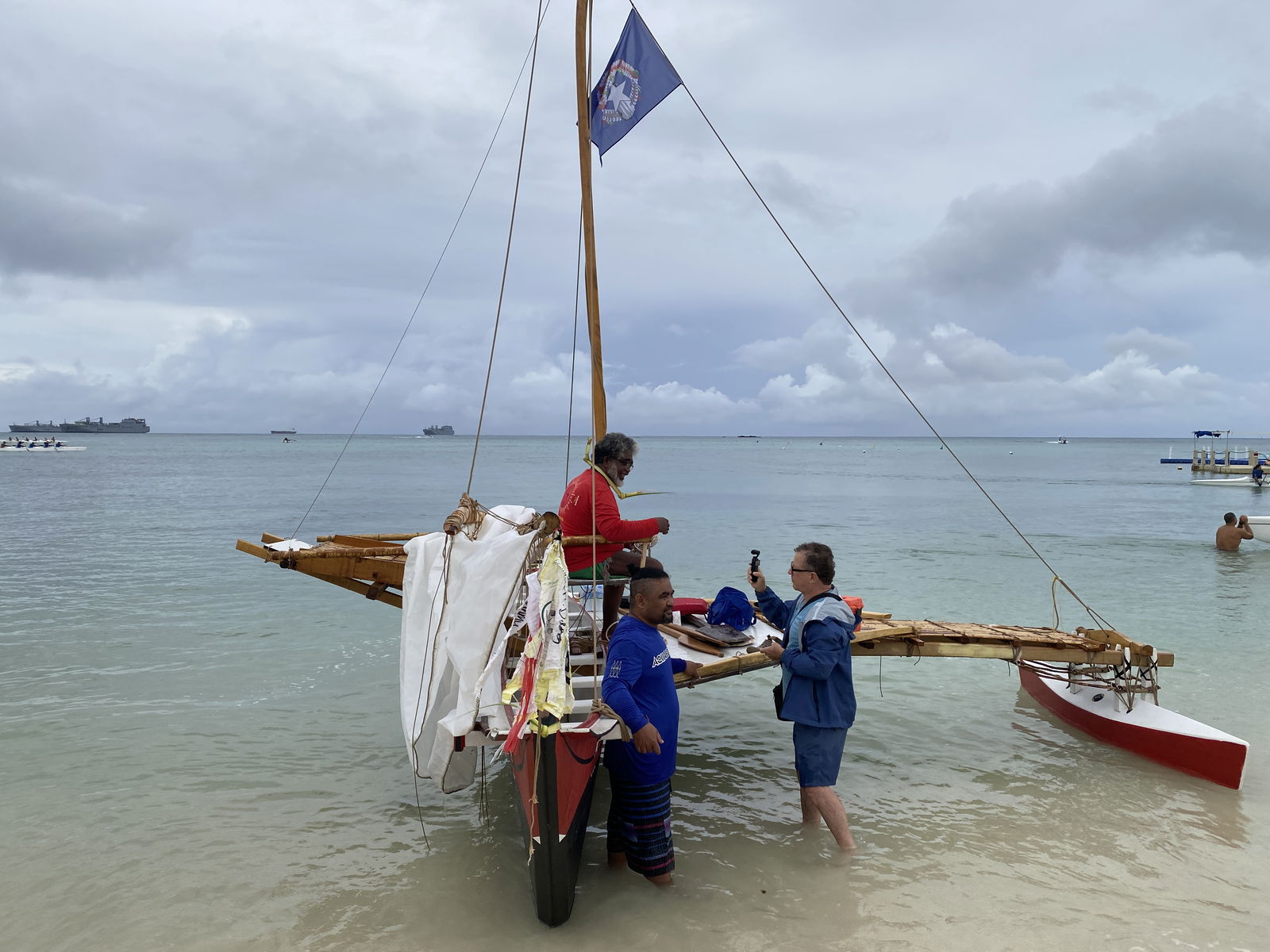
Mario Benito sits atop Mikaela, the fiberglass Carolinian canoe he designed and built.
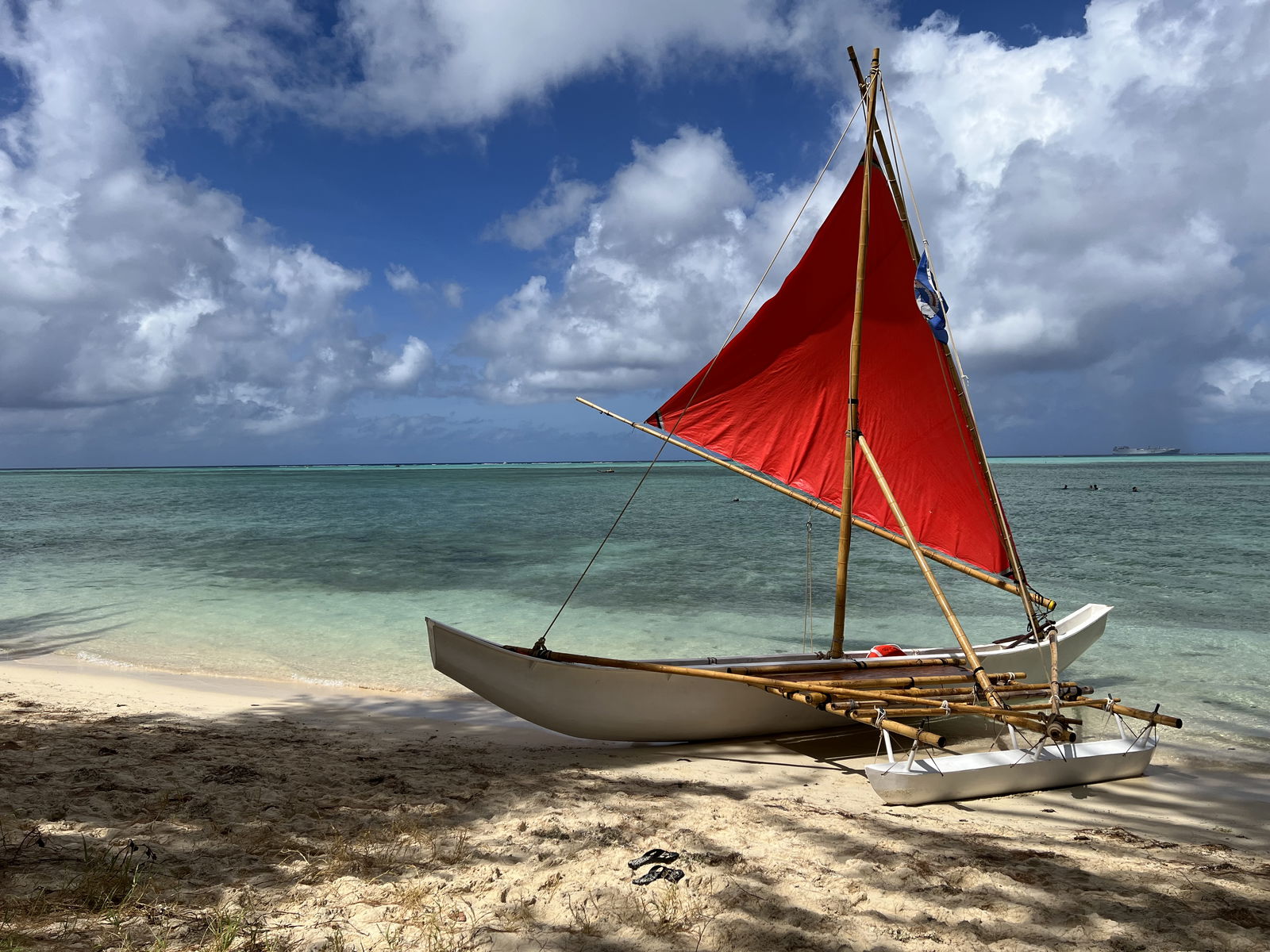
Canoe Richard Seman was named in honor of former lawmaker and Secretary of the Department of Lands and Natural Resources Richard Seman, an early supporter of 500 Sails.
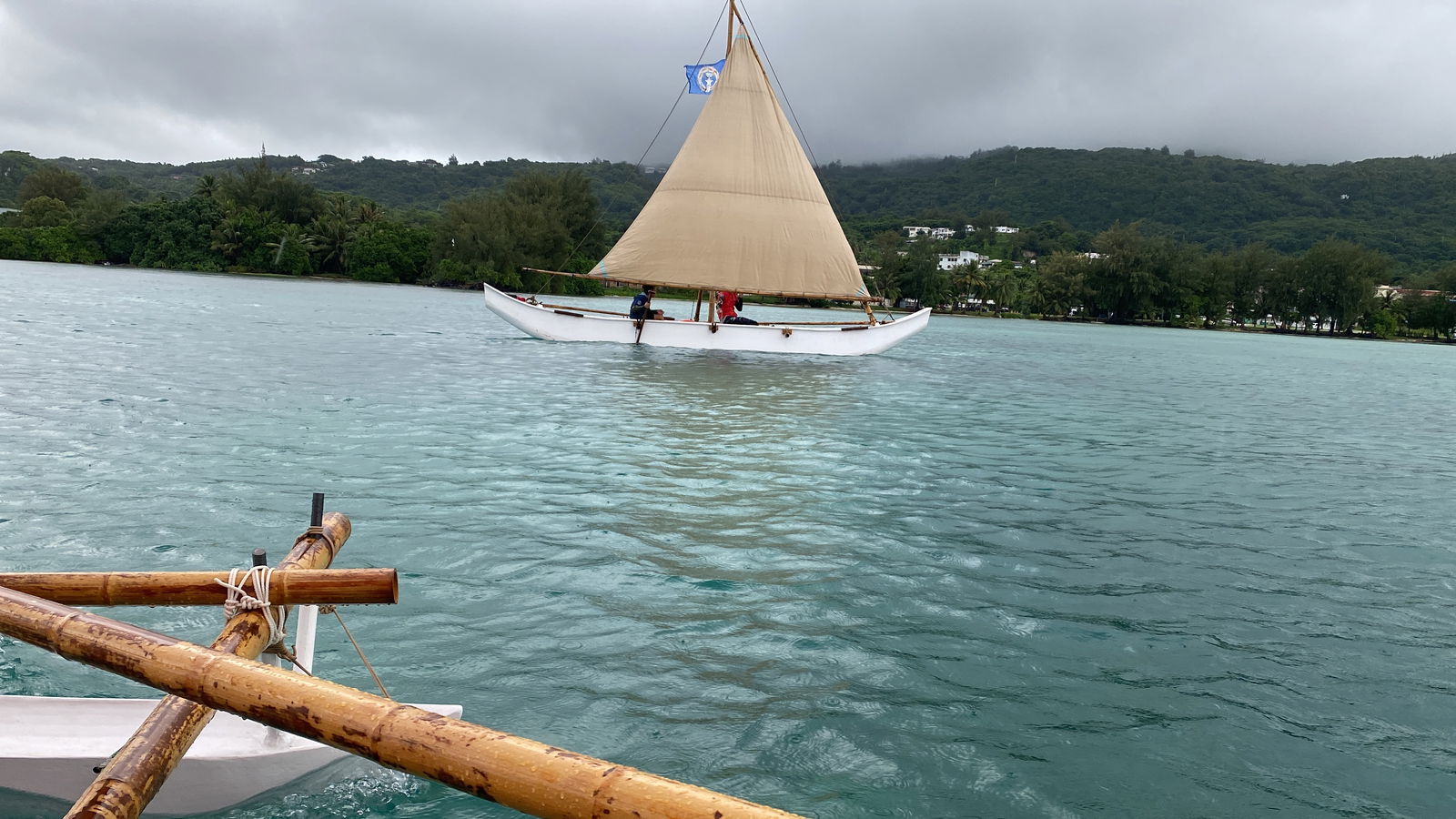
While riding inside Neni, this reporter snaps a photo of Anaguan sailing through the Saipan Lagoon.
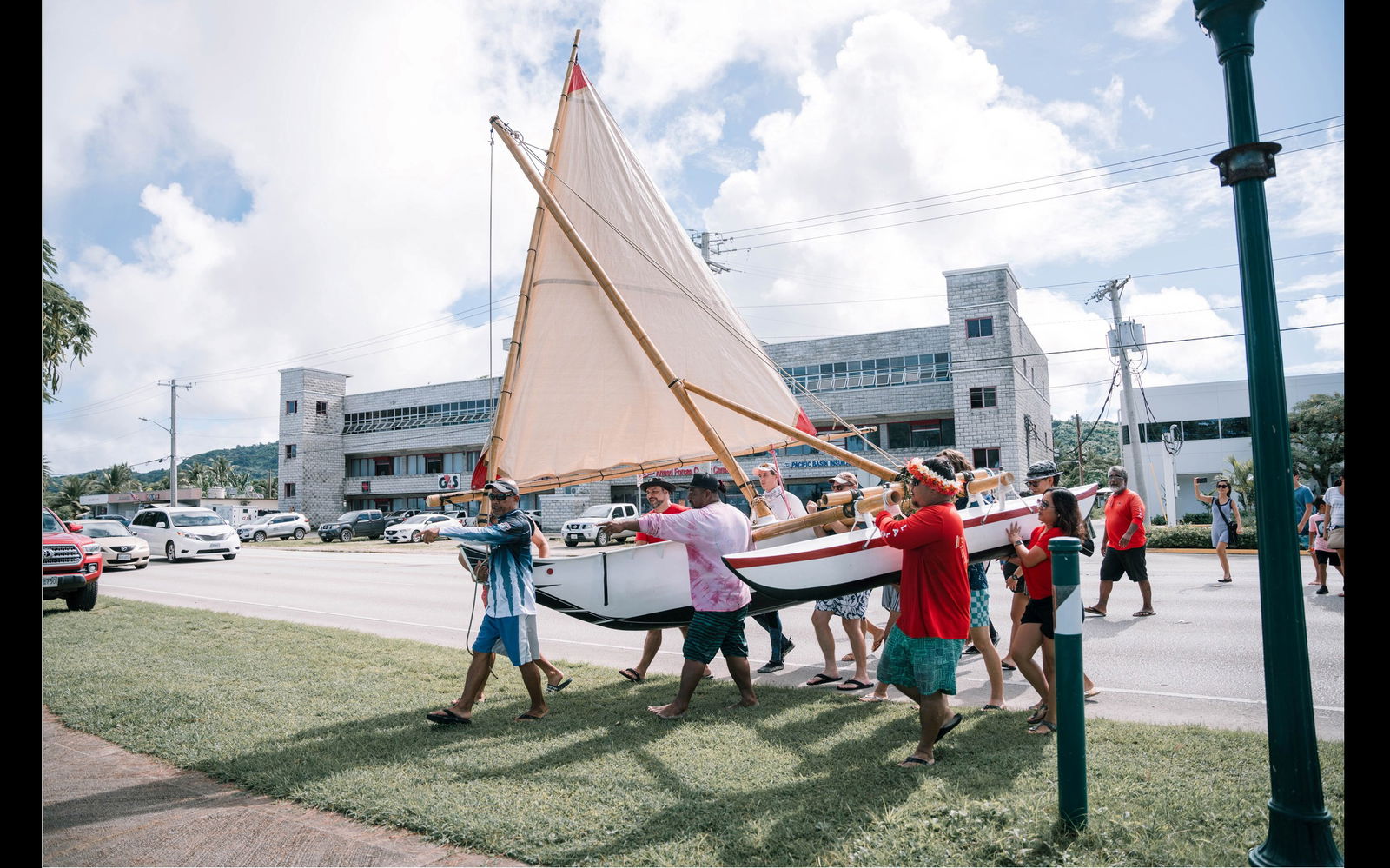
Animuyi was displayed for a time in the lobby of the Bank of Saipan as part of an exhibit of Chamorro and Carolinian maritime traditions, followed by a public ceremony that ended with members of the canoe sailing community carrying Animuyi to the lagoon for her launch.

The 26-foot-long canoe Aunty Oba, in the foreground, is named after the late Jacoba Seman, who lived near the shoreline in Susupe, just north of the Guma Sakman. Ms. Seman was also known as “Oba.” When she passed, her family requested the new canoe be named in her honor.
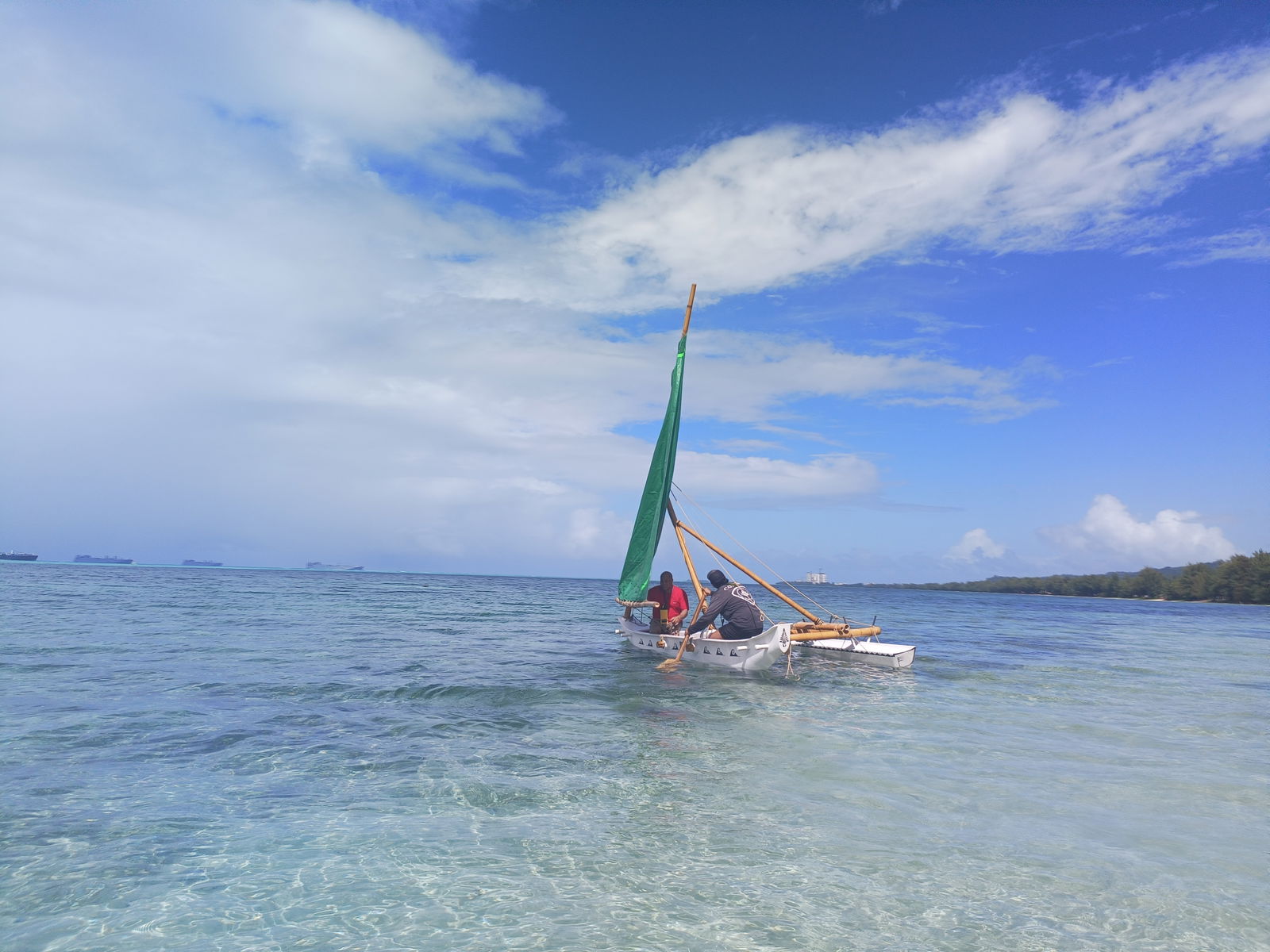
Den Yo Povi, piloted by her owner, Jeremiah Benavente, sails in front of the Guma Sakman on her launch day.

Dee Dee is named in memory of the late Deloris Perez, mother of the boat’s designer and builder, Pete Perez.

Neni was mostly fabricated in New Zealand by a 500 sails crew from Saipan and Guam under the direction of yacht builder Derek Kelsall. She is pictured here with the crew in New Zealand prior to being shipped to Saipan.


